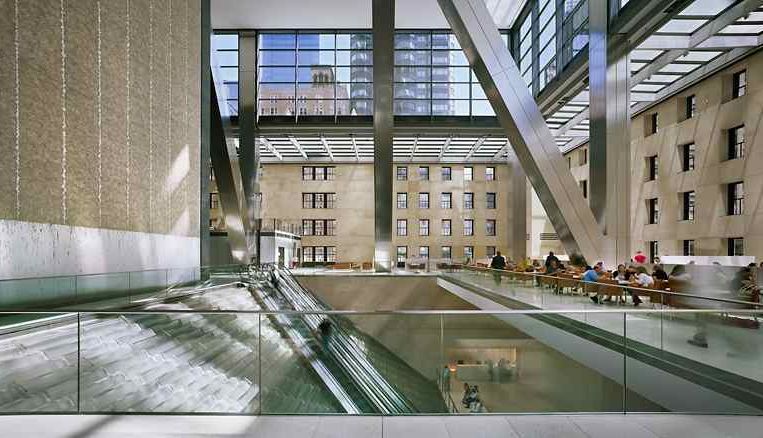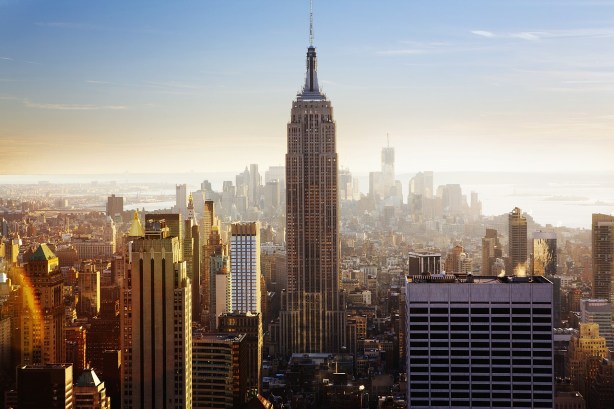LEED Was a Huge Advance 10 Years Ago, but Here Are the Four Biggest Problems With It
By Terence Cullen October 21, 2016 9:51 am
reprints
It’s been LEEDing the way in New York City, officially, for 10 years.
Yes, a decade ago the United States Green Building Council (USGBC) certified two Manhattan buildings under the Leadership in Energy and Environmental Design program, a.k.a. LEED, and since then roughly 150 million square feet of new construction or existing buildings have been given the coveted designation in New York City.
The program, which is entering its fourth incarnation later this month, is certified by the USGBC—a Washington, D.C.-based nonprofit. It calls for sustainable building materials, clean air quality and renewable forms of cooling such as collecting rainwater from roofs.
To some degree, LEED has been a great success in New York City. Tenants at 7 World Trade Center (the first LEED-certified building in the Big Apple) have told landlord Silverstein Properties that because of the air quality and access to natural light required under LEED, the workforce has become more productive and stays in the office longer.
“It has been a major selling point for 7 World Trade Center and 4 World Trade Center,” said John “Janno” Lieber, the president of Silverstein’s World Trade Center division (both buildings have the gold certification). “There’s no question.”
But there are plenty of critics of LEED and not from the there’s-no-such-thing-as-climate-change set.
“LEED is still a super valuable program because of the importance of this holistic view,” said Dana Schneider, a managing director at JLL who specializes in LEED and is an engineer by training, adding that the material and chemical-reduction requirements were still crucial.
But, she continued that saving money through other means is also a factor: “Energy efficiency is the key to the business case and investing in these assets.”
There are real issues with cost, administration and effectiveness of the program, which has had a huge impact on New York City development—but a more questionable development on the environment.
Here are four criticisms from industry executives about the program—and some of the ways landlords and engineers are addressing them.
The Points System
One of the beefs with LEED is that ratings (silver, gold or platinum) are issued through a points system that’s supposed to deem how sustainable a building is. There are points for proximity to mass transit, the types of materials used (and where they come from) and bike rooms, among other things.
But this quickly boils down to nothing more than a numbers game.
That’s the line that Empire State Realty Trust Chief Executive Office and outspoken LEED critic Anthony Malkin has toed, arguing that the points system is overly costly and doesn’t do enough to reduce energy or save money.
“It is an indulgent scavenger hunt for points, which has no economic justification except for the brand of tenants and landlords to which [return on investment] do not matter,” Malkin said. “LEED has failed to adapt itself to the proven investment and return orientation of new efforts in sustainability. And it is too expensive for the vast majority of landlords and tenants…because it makes no economic sense.”
When LEED launched in New York 10 years ago, The New York Times reported the costs associated with getting the gold certification added 6 to 8 percent to the price of constructing a property.
And the scavenger hunts can quickly take a dramatic turn towards crazytown, as Malkin said at a Commercial Observer breakfast last year. For example, he said, bamboo is considered a LEED-friendly material because it regrows quickly. But shipping it across the world—and burning a lot of carbon dioxide to do it—pretty much negates any environmental good using a sustainable wood does, Malkin said.
Malkin was even more cutting when CO spoke to him recently: “LEED was a good first mover, but the bottom line is that [the USGBC] sat on their revenue model, and they have basically, I think, held back progress and sustainability in buildings for five years, six years.”
Two of ESRT’s properties—the Empire State Building and the nearby 111 West 33rd Street—are LEED certified. If Malkin thinks the alleged “scavenger hunt” doesn’t go far enough, why bother with it?
“I was told by my consultants and advisers that if I wanted to criticize LEED and I hadn’t achieved LEED, people would just think I was being a spoiled sport,” he said.

There Are No LEED Police
It’s true: There’s no green-thumbed Joe Friday driving around in a Toyota Prius to put landlords gaming the system in the clink. A building’s core and shell can be LEED certified, a landlord can make sure the air is chemical free, but one really doesn’t have to make sure the building is up to green standards once it is certified and tenants move in.
Engineers and building managers who spoke to CO said one of the best ways to stay on top of sustainability is to get the LEED certification for an existing building. The program is “where the rubber hits the road” for sustainability, said Louis Nowikas, a vice president of Hearst who manages the company’s owner-occupied tower at 300 West 57th Street at the corner of Eighth Avenue. To get the rating (Hearst Tower did in 2012 and will reapply in 2017), building managers basically have to constantly monitor where power is being consumed, when sunlight might hit a certain room and at what times workers are in the building.
Nowikas and his team decided to challenge the status quo not long after the building opened nearly a decade ago. One action was to reduce the wattage on the building’s light bulbs, setting off a chain reaction that reduced the heating of the building and curbed the need for cooling. At one point, the building underwent a $200,000 project to replace some 14,000 light bulbs that had lower wattage. Their life span was five years instead of three, and he estimated that it saved the company $800,000 over a five-year period. Compared with 2007, when the building opened, in 2015 energy consumption dropped 30 percent, according to Nowikas.
Going for the existing building certification is one of the best possible things a landlord can do, said JLL’s Schneider. The work constantly pushes developers to figure out what works at the building.
“I think that, to me, operations and maintenance is just as important,” said Schneider, who worked as an engineer on Hearst Tower in the early 2000s. “I think [the existing building certification] adds a ton of value.”
It’s Hot and Cold When It Comes to Heating and Cooling
If you’re in a densely populated area, USGBC (which didn’t return a request for comment) takes that into consideration and awards you points. A LEED building gets credit if it’s near mass transit. And it gives credit for having a bike room in a building—and, sure, encouraging more biking and less driving is a good (and modestly green) thing.
But these matters all seems like extremely small beer next to the matter of heating and cooling a building—which is to a large extent the whole ball of wax when it comes to green development.
“Essentially, one of the things about building in New York City by LEED standards, is you’re already ahead of the game because of mass transit,” said Robert LiMandri, a senior principal at Vidaris and the New York City Department of Buildings commissioner from 2008 to 2013. “It’s true that although you get these bonuses because you’re in this dense urban environment, you’re not getting them for creative solutions for greenhouse gases.”
LiMandri added that the new version of LEED, slated to kick in on Oct. 31, takes steps to ensure that reducing a building’s carbon footprint is highly encouraged. There are other factors being looked at, too, which explore new ways to heat and cool properties.
Indeed, Passive House standards, which deal particularly with heating and cooling, are now being examined as one of many routes to take on a building when it comes to heating and cooling, said Geoffrey Lynch, the director of architecture for the New York Metro division of construction giant AECOM. While LEED was a good starting platform for sustainability, he added, it has given birth to new means of reducing greenhouse gases.
“We’ve been looking at the Passive House standards,” he said. “There are kind of a number of routes. If the goal of LEED was to make energy-efficient buildings, the goal now is to use very little energy or no energy. It’s this huge leap forward.”
Reducing greenhouse gases is a priority in New York City; Mayor Bill de Blasio has pledged to decrease building emissions 80 percent by 2050 from 2005 levels. The Real Estate Board of New York has backed the plan, and this summer the group began training property managers in new ways to reduce one’s carbon footprint.
The Energy Efficiency Debate
Aside from heating and cooling, Malkin has maintained that LEED does not do enough when it comes to saving energy. His argument has been that the 85-year-old Empire State Building has done more things when it comes to energy efficiency than some ground-up LEED Platinum building.
“There is no investment and return orientation on such metrics as saving energy, reducing water consumption and creating healthier environments,” he said. “They don’t quantitatively monitor and verify other than points on their own proprietary system.”
The Empire State Building, for instance, includes elevators in which brakes emit energy that power other cars…which is not something you can get LEED points for but saves money and energy.
And the belief in reducing energy has been passed on to tenants, with the promise that a current investment will reduce costs later, said Schneider, the JLL executive who worked with ESRT on LEED certification as well as its energy efficiency initiatives.
In other words, the smart developers and tenants have taken it upon themselves to look well beyond LEED.
“LEED was a very powerful, very good starting point,” said Lynch, the AECOM executive. “There are a lot of other routes to pursue [now]. Basically LEED helped create a very knowledgeable building industry about how to make energy-efficient buildings.”


